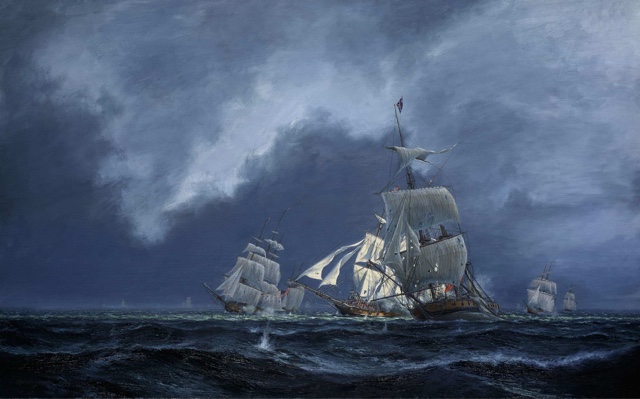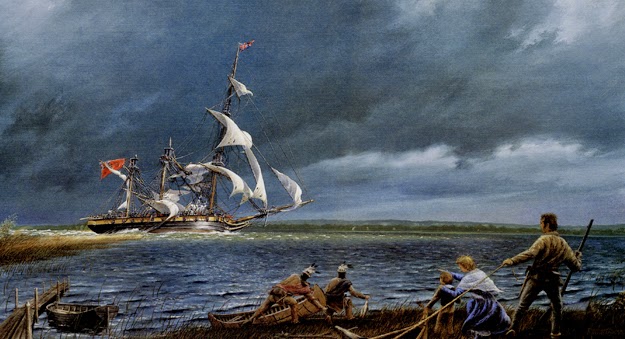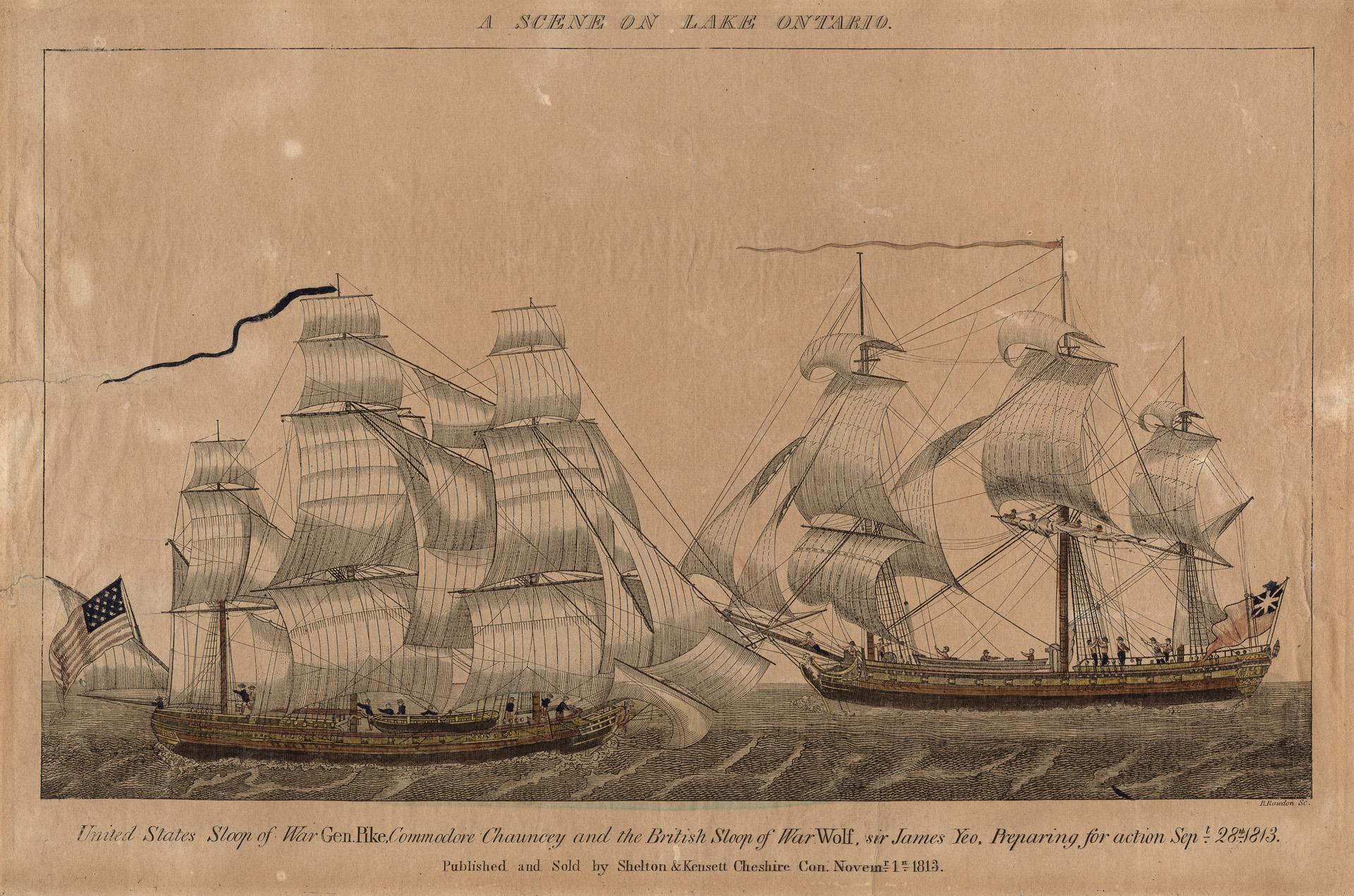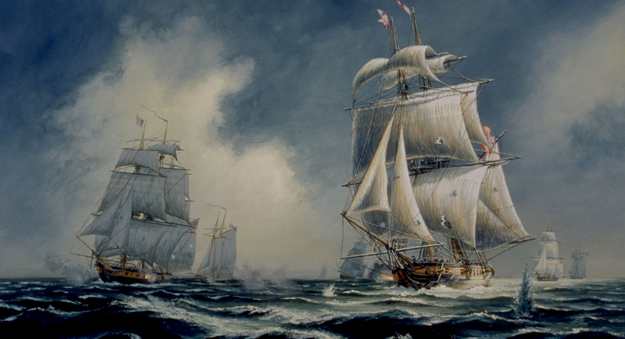Almost 208 years ago, and within site from the shoreline of historic Mississauga, a naval engagement took place on Lake Ontario which could have shaped the fortunes of the War of 1812 and the story of Canada.
The engagement became known as the “Burlington Races”, and the name, sounding somewhat like a pleasurable yachting excursion, belies the story of what happened, and what might have happened.

In the early morning hours of September 28, 1813 the Royal Navy squadron were in the harbour at York (Toronto).
Just a few weeks earlier, on Lake Erie, the American navy had defeated their British counterparts at the Battle of Put-in-Bay, handing control of the upper lakes to the Americans.
Control over Lake Ontario, and by extension, the war itself, was hanging by a thread.
That morning, in the distance, lookouts spotted sails on the horizon – American ships were heading towards York. Their intent was not to invade the town, but to engage the Royal Navy and end the contest for control over the lake.
The American squadron was led by the USS General Pike and commanded by Commodore Isaac Chauncey. The Pike was joined by the USS Madison, the USS Sylph and the USS Governor Tompkins.
The lead ships towed three converted schooners, the Asp, Ontario and Fair American. In total the American squadron outnumbered the British ten ships to six.
The American squadron also had the advantage in firepower with a “broadside weight-of-metal ratio of three to two”, and they also “outgunned the British in long range cannon by three to one.”
The Royal Navy squadron was led by Commodore James Yeo aboard the flagship HMS Wolfe and accompanied by 5 other ships, including the HMS Royal George, HMS Melville, HMS Beresford and the sloop Mary Ann.

The British made a run for it, seeking the open water of the lake. The British ships were faster and more maneuverable. The Americans had greater numbers and guns.
This pivotal battle for control of Lake Ontario, and perhaps the war itself, took place within eyesight of the shoreline, between modern Port Credit, Bronte and Burlington. Some witnesses watching from shore as the squadrons maneuvered for position likened what they saw to a yacht race – hence the name “Burlington Races”.
At daylight, the British squadron was west of Toronto, close to modern Port Credit. The American squadron had sighted them and were in pursuit. It was a slow start for what might have been a decisive battle; perhaps neither commodore wanting to make a fatal mistake.
The squadrons stalked each other, and at noon it was Yeo who made the first move. With the British squadron in single file for battle, the Royal Navy squadron swung around to close the distance and engage. The American squadron was slower, allowing the Wolfe to bring her guns to bear on the Pike first.
The Wolfe fired, her cannons tearing into the Pike. Wounded, but still in the fight, the Pike finally returned fire with a broadside of fourteen cannons. The blasts echoed along the not-so-distant shore. One of Wolfe’s masts toppled, bringing a portion of a second mast with it: disaster! The flagship was in peril.

Again the Pike’s cannons roared at the wounded Wolfe. Defeat was imminent, but the Royal George saved the day. She sailed into the fray, positioning herself between the Pike and the Wolfe, and opened fire. She bought the Wolfe precious time, while inflicting severe damage on the Pike.
Cutting free of her damaged masts, the Wolfe was able to limp away, and the rest of the British fleet followed, their sails before the rising wind. Damaged and vulnerable as she was, the Wolfe was still fast, and the British set their bows towards Burlington Bay.
Sluggishly, the American squadron followed, and the “race” was on. For the next hour or more the sixteen ships sailed as fast as they could, with the weather turning and the wind picking up. From the shoreline, people could see the ships. For the American squadron, only the Pike could keep pace, and she could not narrow the distance.
The Pike herself was also dangerously wounded, having been holed beneath the waterline and her crew was furiously pumping the water out to keep her afloat. Somehow Chauncey was trying to find a way to cut off the British squadron before victory was snatched away from his grasp. “All or none” Chauncey is said to have remarked. He wanted the Wolfe, and was determined to end the contest for control of the lake. But it was not to be.
One of the Pike’s cannon’s exploded, ripping through the deck, while at the same time the British ships were getting closer to safety. When the British squadron reached Burlington Bay, they tacked to face the oncoming American ships and dropped anchor.
Their backs were to land where they were protected by British batteries, and their guns were primed and aimed at the oncoming American fleet. Faced with odds suddenly turned in his prey’s favour, Chauncey had missed his chance.
The battle was over, and the damaged American squadron retreated. At best, it was a stalemate. The Royal Navy squadron survived to fight another day, and control of the lake, and the war itself, remained contested. But in effect it was a devastating loss of opportunity for Chauncey and the American squadron. They would not get another chance.
The butcher’s bill tells the human story. The British suffered 2 killed and 2 wounded, which was remarkable given the pounding that the Wolfe received. The Americans suffered 27 casualties. And somewhere out there, under the deep cold waters of Lake Ontario offshore from modern Port Credit, likely still lies the masts of the Wolfe, cut down in the fight over 200 years ago.
For more information on this fascinating naval engagement and the war over Lake Ontario, we highly recommend:
https://scholars.wlu.ca/cgi/viewcontent.cgi?article=1271&context=cmh
&
“Lords of the Lake: The Naval War on Lake Ontario, 1812-1814” by Robert Malcolmson
&
https://www.youtube.com/watch?v=7B6nD2Vtcug




Comments are closed.